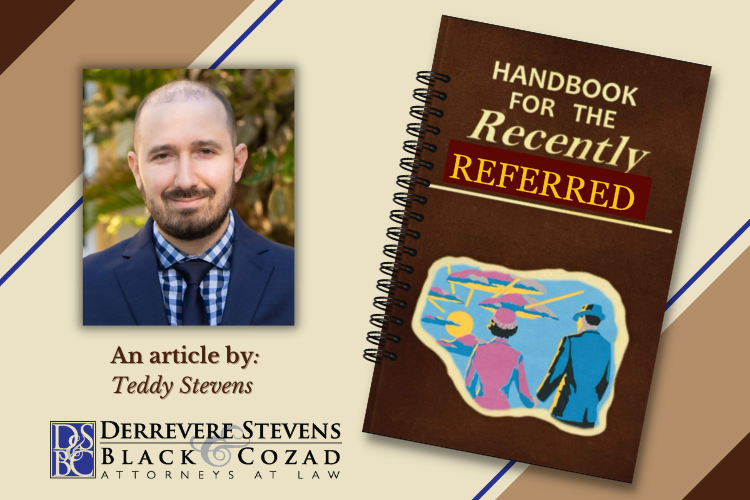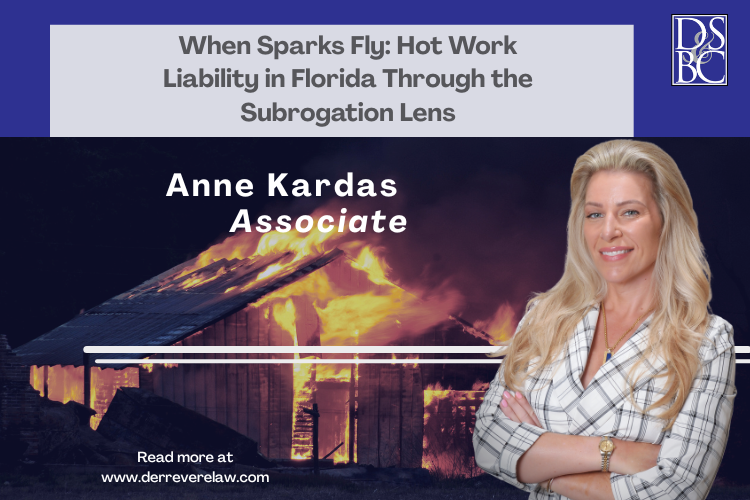A Guide for the Rush Assigned Subrogation Loss

In the subrogation field, nothing requires an immediate call to action quite like the email containing the Subject Line: NEW ASSIGNMENT- RUSH. It is the closest thing that subrogation professionals and attorneys have to an “Emergency.” Once the assignment is received, time is of the essence to ensure that your subrogation claim is properly investigated, and your theory of liability is thoroughly developed. The ability to make a recovery is directly tied to how efficiently and effectively the subrogation process is handled on a new loss. If the proper steps are not taken, it is very likely that any chance of a subrogation recovery will be lost. So once the assignment comes in, “It’s Showtime!”
The first step in your subrogation recovery process should be to obtain as much information as possible regarding the loss. In an ideal scenario, the new file comes in with all the essential information such as the following:
- Date of the Loss
-
- The more recent the loss, the more urgency you will need to proceed with as it is likely the evidence and the site may still be available to be preserved.
-
- Loss Location
-
- This is particularly important when you choose your expert and affects the strength of your theory of liability depending on the laws of the State that the loss occurred in.
-
- Cause of the Loss
-
- The cause will affect which type of expert is needed.
-
- Parties
-
- The most important piece of information since you need to identify all potential subrogation targets;
- This also includes identifying any possible sub-contractors of the targets along with every party’s insurance carrier.
- The most important piece of information since you need to identify all potential subrogation targets;
-
- Status of the Loss Site
-
- Need to figure out if repairs have begun or if site is still in its post-loss condition.
-
- Status of Potential Evidence
-
- Need to identify and preserve all possible evidence in its original condition.
-
Typically, you will need to obtain most of this information yourself. The first place to obtain this information is to review the file materials that have been provided to you by your client. Review the file for the important topics listed above but also determine what information is missing. Once you identify the missing information, you then need to determine where to acquire these details. I would recommend contacting the adjuster/client who assigned the file to see if they can fill in any holes. If they do not have the information that you seek, then try the first party adjuster handling the claim. The first party adjuster is usually a great resource as they are the boots on the ground usually when a claim first occurs. They should be able to fill you in as to what has been done on the claim so far and what steps still need to be taken. If the first party adjuster does not have the required information, then contacting the insured (if permitted by the carrier) would be the next step. Keep in mind that the insured has most likely just gone through a fairly serious loss and you need to be empathetic to their situation.
The Second Step in your subrogation process should be confirming the status of the loss site. Whether it’s a fire loss or a water loss, you need to determine whether the site has been preserved in its original condition or if repair work has already begun. If the site has been preserved, then go ahead and inform the first party adjuster and insured that the site will need to be left undisturbed until your expert and potentially other parties have had a chance to examine the scene. This part of the process is exceptionally difficult as the insured will be pushing for repairs to begin as soon as possible so that their damages are mitigated and property is returned to pre-loss condition. It is essential to properly explain your role in the process to the insured and also show them that you are moving in an urgent manner. In the event repairs have already begun, you will need to notify the insurance carrier and your insured that repairs may need to be stopped until parties can be placed on notice and your expert has had an opportunity to examine the scene. The better preserved the loss location is, the greater the chance that a strong theory of liability can be developed. If the scene is not properly preserved, it will affect your ability to develop a theory of liability and will also lead to other parties potentially raising evidence spoliation arguments that can hurt your case.
The Third Step in your process should be retaining an expert to help investigate the cause of the loss and hopefully develop a theory of liability against a target. Here are some of the factors that you should be considering when retaining an expert on a new loss:
- Type of Expert
-
- Ensure that you are retaining an expert with the appropriate background for your loss. For instance, if the loss involves a fire, make sure to retain an expert who has experience in fire investigation.
-
- Expertise of Expert
-
- The expert needs to be seasoned enough to qualify as an expert and testify competently at trial. Using experts you have previously used and that have previously qualified for experts at trial are preferred. Reviewing the CV (“Curriculum Vitae”) can also help determine whether the potential expert has sufficient qualifications to be your trial expert.
-
- Location of Expert
-
- Location of the expert is exceptionally important as you will need the expert to be available as quickly as possible and finding an expert that is close to the loss location will help keep travel expenses lower during the investigation and if they need to testify at trial. If you are flying in your expert from across the country, it may limit their ability to visit the loss location immediately and will also be expensive if multiple site or evidence exams are needed.
-
- Multiple Experts
-
- In many claims, you may need more than one type of expert. If the loss involves a fire loss that originated in an electrical device, you will most likely need not just a fire investigator, but an electrical engineer as well.
-
Once you have picked your expert, you will need to obtain their availability and their proposed budget. You will need to ensure that the expert is available to inspect the loss site immediately. Once the expert’s budget has been obtained, you will most likely need to submit the budget to your client for approval.
The next step on your subrogation journey is identifying any possible evidence that will need to be preserved. Depending on the type of loss, evidence could mean something as small as a hoverboard that caught fire but could almost mean fire debris or even circuit breakers on the site. Your ability to identify and preserve the evidence will be one of the most important factors in whether you will be able to sustain a subrogation claim and obtain a recovery. You (or your expert) will need to determine any possible pieces of evidence that need to be retained. Contacting the insured or first party adjuster is a great place to start to see which parties are in possession of the evidence. If the insured is still in possession of the evidence, it is important to notify them that they will need to ensure it is not discarded until your expert can take possession of it. If a party other than your insured has the evidence, it is essential that you inform them in writing that the evidence needs to be preserved. Written notice is essential in potentially pursuing a spoliation claim later down the line if the other party decides to discard the evidence.
As your subrogation claim progresses, managing the insured’s expectations needs to be addressed at every step of the process. The insured has just suffered a loss and they will be extremely active and involved in pushing their claim forward so that repairs can begin. Sometimes insureds can view the subrogation investigation/pursuit as a potential impediment to their goal of having their claim processed and paid out. As an insurance professional or subrogation attorney, it is part of our job to keep our insureds constantly updated and explain the process as it progresses. Keeping the insured notified of all your efforts to get all potential parties on notice and the site examination completed will help ease the insured’s concerns that your subrogation pursuit will cause undue delay on their repairs. Part of managing the expectations of the insured is to provide “realistic” timelines so that they understand when this process is likely to be concluded.
The last and most important step in the subrogation process is effectively notifying the possible tortfeasors and their carriers so that they have an opportunity to inspect the site and evidence prior to repairs beginning on the property. Since time is of the essence, it is important that notices that are sent to parties are sent through the most effective methods possible. Simply sending a notice by regular mail for an inspection that is to occur in 3 days is not effective notice. Notices should be sent via e-mail or fax to ensure that parties timely receive the notice so that they can retain an expert, have an opportunity to attend the inspection, and have time to notify their insurance carrier. When providing notice, you should not assume that a target is going to notify their insurance carrier. You need to also notify the target’s insurance carrier separately if you have their information. Sometimes that will require opening a claim with their insurance carrier so that the carrier will have an opportunity to assign their own expert and investigate the claim. If you fail to involve the target’s insurance carrier, it’s possible that the carrier could deny coverage down the line and that would be extremely detrimental to your recovery efforts. It is also better to over notify parties rather than making assumptions that some parties are not involved. For instance, if a fire occurs in an area where there are multiple devices that the fire could have originated from, all the manufacturers of those devices should be put on notice until your expert is able to effectively rule them out. This is also important to put on notice both installers and manufacturers of products as it will be unclear at the beginning of the investigation whether you are looking at a product defect or an installation issue. If there is a 1% chance a potential target could be liable, then you need to put them on notice as it will increase your chances of making a recovery.
Even after taking all these steps, there is no guarantee that you will be able to develop a theory of liability and make a subrogation recovery. The evidence may be too badly damaged for your expert to conclude the cause of the loss, or the statute of repose may have expired in that jurisdiction to pursue a claim against an installing party. However, by following the above handbook, you will give yourself the best possible chance to make a recovery. Subrogation claims can be won or lost when the claim/investigation is at its infancy stage. How quickly and effectively you handle the subrogation investigation in these early moments will decide whether you are looking at a recovery or a closure.




